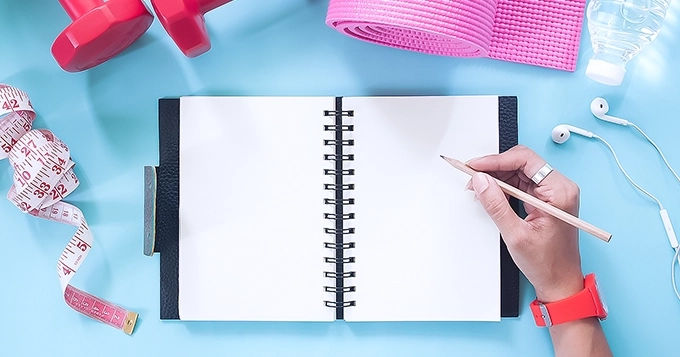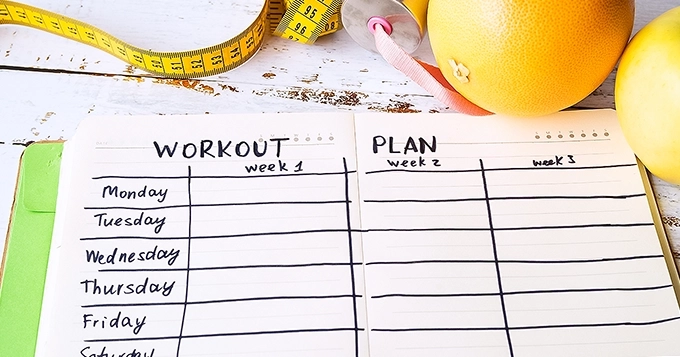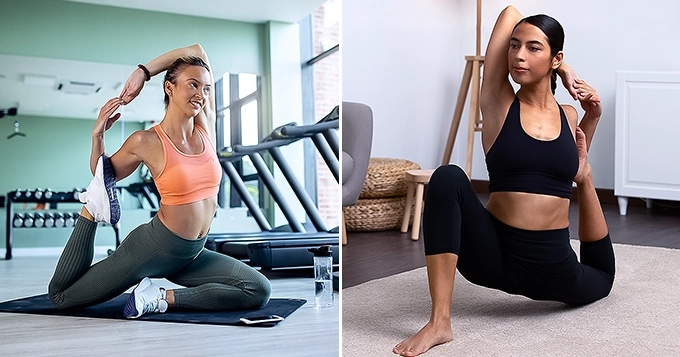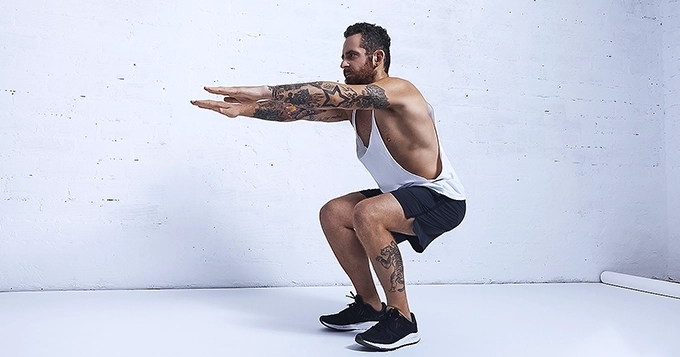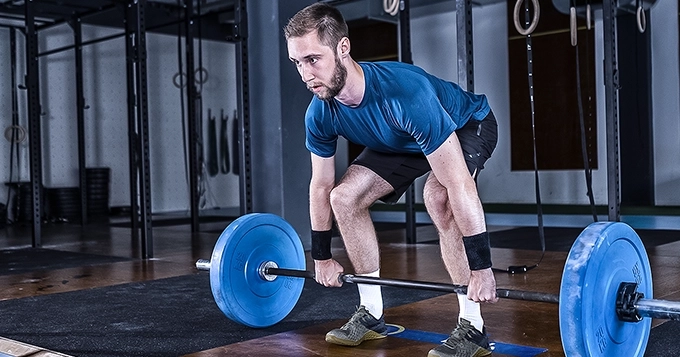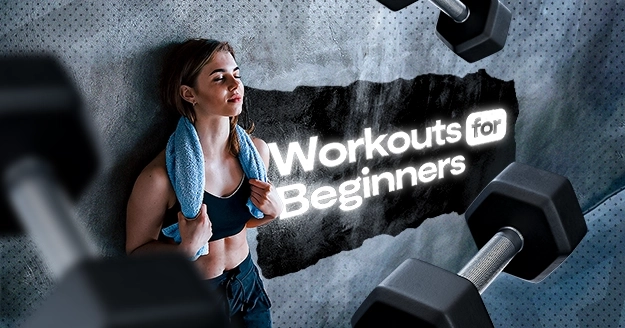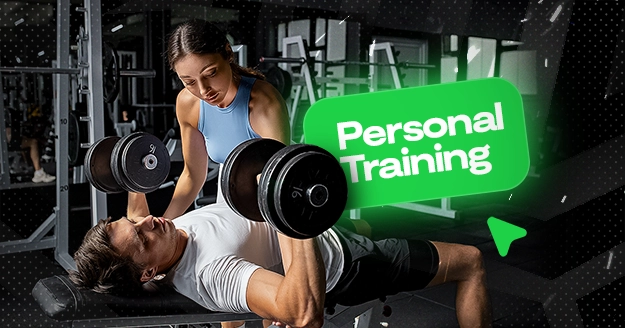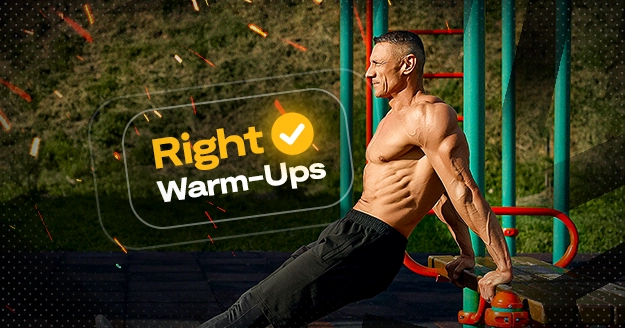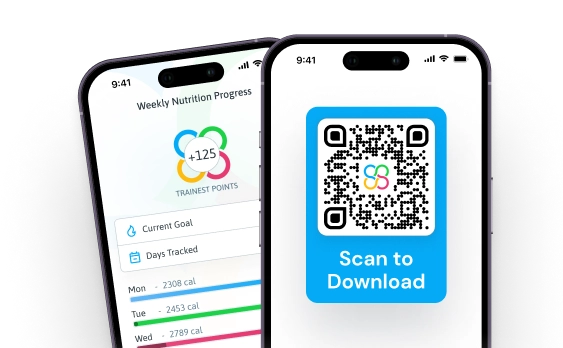Wondering what is a good workout routine for beginners?
Whether you’re looking for a gym for beginners female guide or a beginner gym workout male tips, this answer remains true:
A good workout routine for beginners should be well-rounded, focusing on building strength, improving cardiovascular health, enhancing flexibility, and promoting overall fitness.
Are you ready to kickstart your journey to sustainable fitness but feeling overwhelmed by the plethora of workout options available? Don’t worry—starting a fitness routine doesn’t need to be complicated.
In fact, simplicity is key, especially when picking workouts for beginners. To help you confidently start your fitness journey, we’ve compiled a comprehensive checklist of essential workouts tailored specifically for beginners. These workouts are beginner-friendly, effective, and, most importantly, enjoyable. So, let’s dive in and discover the essential workouts you need to include in your fitness routine!
How to Make a Workout Routine for Beginners?
The first suggestion is to hire a personal fitness trainer to create workouts for beginners. Fitness trainers can curate programs that cater to your fitness level, fitness goals, unique needs, schedule, and more. They can also provide extra accountability to motivate you to stay on track.
Another advantage to hiring a fitness trainer is having someone to correct your posture during exercise. This way, you can ensure you are hitting the target muscles while minimizing your risk of injury.
But let’s be honest. Trainers are expensive. Although devoted trainers can bring about amazing results in a short amount of time and are well worth their weight in gold, most people cannot afford to hire one.
However, that doesn’t mean you shouldn’t benefit from an intelligent, well-designed program. The following steps can help you create your own workout program that you’ll love.
Step 1: Determine Your Goals
- Are you trying to lose weight?
- Are you trying to build muscle?
- Are you trying to maintain your weight?
- Are you aiming to do your first full split?
- Are you preparing for a 5k run?
Whatever your goals, it’s a good idea to put them in writing and have a clear idea of what you hope to achieve. These goals are foundational for designing your workout program.
A great approach to setting goals is by using the SMART method, which stands for specific, measurable, attainable, relevant, and timely.
- Specific – Make sure your goals clearly outline what you want to achieve. They should be straightforward and easy to grasp.
- Measurable – Your fitness goals should be quantifiable so that you can track your progress. For instance, if your aim is to gain 5 pounds of muscle, you’ll need body composition equipment to monitor your fat and muscle mass changes.
- Attainable – Make sure your goals are realistically achievable. Remember, gaining about 0.5 pounds of muscle per week is a reasonable target. So, aiming to gain 5 pounds of muscle should realistically take around 10 weeks.
- Relevant – Your goals should align with your interests, needs, preferences, and abilities. It’s important that your goals are meaningful to you and are driven by your own desires and motivations.
- Timely – Set a timeline for achieving your goals. For example, if your goal is to gain 5 pounds of muscle, aim to accomplish it within a minimum of 10 weeks.
Step 2: Decide When Your Work Days and Rest Days Are
The key to achieving success in training is consistency. Creating a schedule that will keep you in the game should therefore be your first priority. Even the most effective exercise program is meaningless if you don’t follow through on it.
This means you need to create an achievable program that strikes the right balance between activity and rest. While there’s an art to this, the first step is simple: outline a general schedule. Decide on the activities for each day of the week, starting from Monday through Sunday.
To start, aim to work out for five days each week and rest for two days. This schedule is typically sufficient for achieving favorable results for most individuals.
Here is a breakdown of what to do:
- Pick the 5 days per week you’ll do some kind of training.
- Pick two days for rest and recovery.
- From your schedule, select one of your rest days and one of your 5 workout days for active recovery.
Table 1. Sample of workout days and rest days schedule (including active recovery days).
|
Day |
General Activity |
|
Monday |
Rest (Active Recover) |
|
Tuesday |
Workout |
|
Wednesday |
Workout |
|
Thursday |
Workout (Active Recovery) |
|
Friday |
Workout |
|
Saturday |
Workout |
|
Sunday |
Rest |
Step 3: Decide Where You Want to Work Out.
Do you want to train at a gym?
If you’re looking for a gym that’s all male or female, you can probably just search Google ‘gym for beginners female’ or ‘beginner gym workout male’, which will show you the nearest gym to your place.
Or perhaps you just want to train in the comfort of your own home.
Your workout location will significantly influence whether you’ll exercise using your body weight or transitioning to strength training at the gym. Knowing this will help you with the next step.
Step 4. Decide What Type of Workout You Want To Do
It is essential to add variety to your routine. You should regularly change up your repetition schemes, workout times, distances, weights, and activities.
Engaging in the same routine every day can lead to mental fatigue and physical injury. Continuously performing the same movements puts excessive strain on the same muscles and joints, eventually leading to overuse injuries and hindered recovery.
You can vary your routine by including different exercises that target various muscle groups
Here are some samples of muscles and what exercises target them:
- Quads – Box Jumps, Lunges, One-Legged Squats, Squats
- Butts and Hamstrings – Deadlifts, Good Mornings, Hip Raises, Step-Ups, Straight Leg Deadlifts
- Chest, shoulders, and Triceps – Bench Press, Dips, Incline Dumbbell Press, Overhead Press, Push-Ups
- Back, Biceps, and Forearms – Bent-Over Rows, Bodyweight Rows, Chin-Ups, Pull-Ups
- Core – Exercise Ball Crunches, Hanging Leg Raises, Jumping Knee Tucks, Mountain Climbers, Planks, Side Planks
Table 2. Including the type of activity and variety.
|
Day |
General Activity |
Specific Activity |
Variety |
|
Monday |
Rest (Active Recover) |
Yoga |
– |
|
Tuesday |
Workout |
Weight Lifting |
Barbell Deadlift |
|
Wednesday |
Workout |
Running |
Endurance Run |
|
Thursday |
Workout (Active Recovery) |
Active Stretching |
– |
|
Friday |
Workout |
Bodyweight Training |
Planks |
|
Saturday |
Workout |
Running |
Max Effort / Medium Distance |
|
Sunday |
Rest |
– |
– |
Step 5. Determine How Much Time You Can Allot for Exercise and What The Intensity Is
If you can dedicate an hour each day, that’s excellent. However, if your schedule is packed with family responsibilities, work commitments, and other obligations, and you only have thirty minutes available twice a week, that’s perfectly okay too. The secret is to make the most of the time you have available and adapt your fitness routine to fit your lifestyle.
Table 3. Updated with time and intensity.
|
Day |
General Activity |
Specific Activity |
Variety |
Time |
Intensity |
|
Monday |
Rest (Active Recover) |
Yoga |
– |
7:00 am to 7:30 am |
– |
|
Tuesday |
Workout |
Weight Lifting |
Barbell Deadlift |
7:00 am to 8:00 am |
3 sets x 5 reps |
|
Wednesday |
Workout |
Running |
Endurance Run |
7:00 am to 9:00 am |
1 set x 5 miles |
|
Thursday |
Workout (Active Recovery) |
Active Stretching |
– |
7:30: to 8:00 am |
– |
|
Friday |
Workout |
Bodyweight Training |
Planks |
7:00 am to 9:00 am |
3 sets x 1 min hold each |
|
Saturday |
Workout |
Running |
Max Effort / Medium Distance |
7:00 am to 9:00 am |
1 set x 1 mile |
|
Sunday |
Rest |
– |
– |
Whole Day |
– |
You can always add more exercises per day and increase the reps and sets. Just make sure that you rest in between sets, around 1 to 2 minutes, depending on the type of exercise.
You can also break up your workout. The American College of Sports Medicine (ACSM) suggests that accumulating three 10-minute sessions of exercise throughout the day, totaling 30 minutes, can be just as effective as completing one continuous 30-minute session of exercise.
Remember: Gradually increase the intensity of your exercises.
Step 6: Track Your Workouts
To program effectively, it’s essential to keep detailed records.
These records should include:
- Objective Data
-
- workout times
- reps
- sets
- loads
- distances covered and more
- Subjective Data
-
- how your body feels
- your mental state
- your level of recovery
Maintaining these records allows you to track your progress accurately and identify patterns over time. By analyzing this data, you can determine what aspects of your program are working well and where adjustments may be needed for the next cycle.
For example, if you notice that certain workouts consistently leave you feeling fatigued or sore, you can modify the intensity or duration of those sessions to better suit your needs and recovery capacity. Similarly, if you find that particular exercises or activities yield better results or are more enjoyable, you can incorporate more of them into your program.
Ultimately, keeping comprehensive records empowers you to make informed decisions about your training regimen, leading to better outcomes and long-term success.

